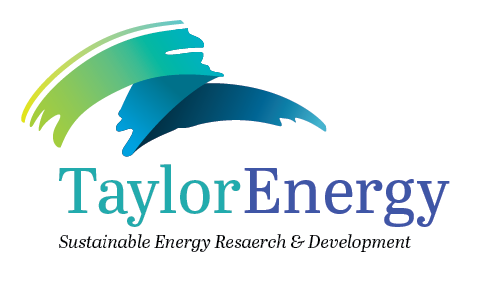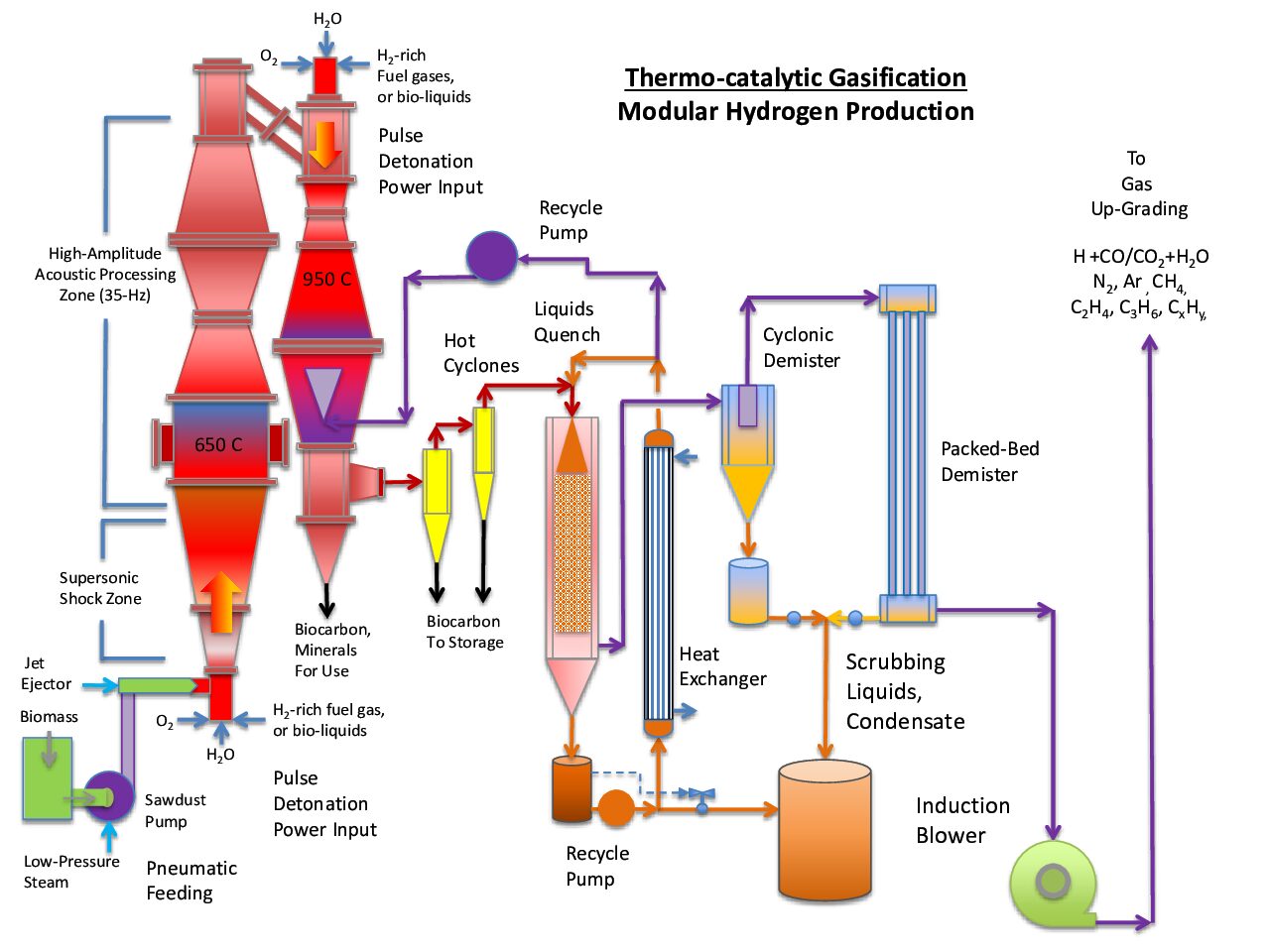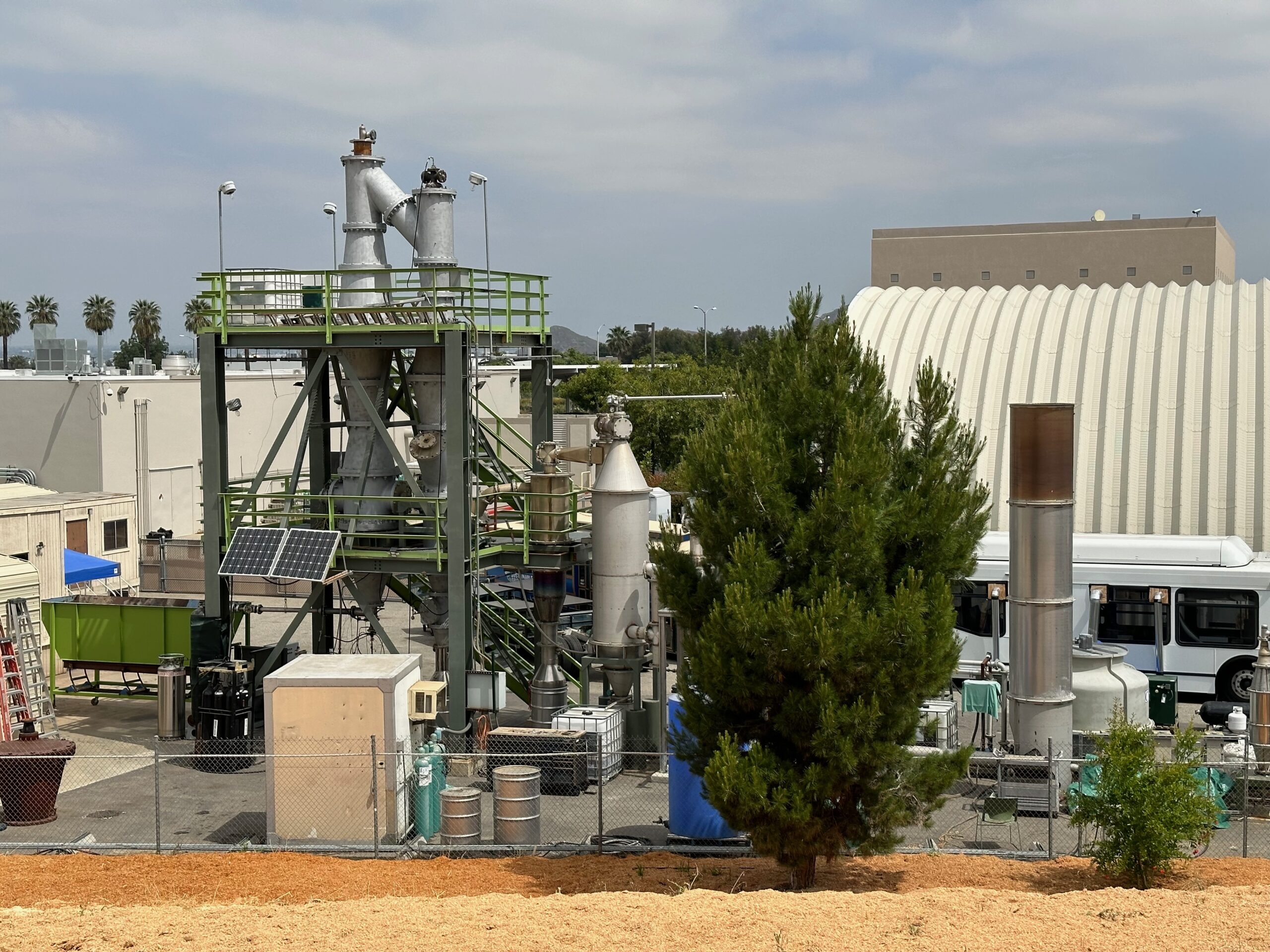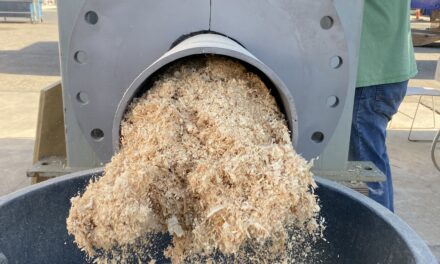The Taylor Energy Syngas Process employs pulse detonation shockwaves that generate acoustic power and process heat to intensify thermo-catalytic gasification processes. Pulse detonation power transfers momentum to the process inputs. Based upon PDRE rocker propulsion techniques, atomized mixtures of oxygen/fuel/water are detonated at 30 Hz, generating powerful supersonic shocks that degenerate (within about 1-meter) into intense subsonic acoustic waves; momentum is input as increased gas turbulence (increased mixing of gases and solids). The formation of multiple micro-vortices serves to dissipate carbon char by minimizing the growth of sub-micron carbon particles; gas velocity and gas compression are also improved favorably by intense acoustic power inputs.
A flow diagram for the Taylor Energy Syngas Process shows the use of a pneumatic feeding system, employing an auger-feeder to control the feed rate, low-pressure steam at 1-atmosphere (200 C) as the transport fluid, and the use of a jet-ejector to drive the feed into the detonation discharge zone. The feed materials are entrained by the detonation exhaust when input into the expansion zone, where a powerful up-flow pattern with intense micro-vortex mixing is established.
For modular conversion of biomass residues into hydrogen-rich syngas, we employ two temperature stages: the 1st thermo-catalytic processing stage provides 1-second retention time for biomass particles to devolatilize at 600 C; the 2nd thermo-catalytic processing stage provides 1/2-second at 950 C for porous carbon particles to react autothermally with hot process gases. The flow diagram shows 2nd pulse detonation power system located atop the down-comer section, firing directly downward into a reforming a 2nd-stage reforming section, again providing momentum that enables rapid mixing of carbon particles at the sub-micron particle level to react carbon with water molecules to form syngas with >50-vol% hydrogen intended for subsequent recovery as cryogenic liquid hydrogen.
Taylor Energy was granted an initial US patent for Shockwave Gasification that issued on November 29, 2022.





